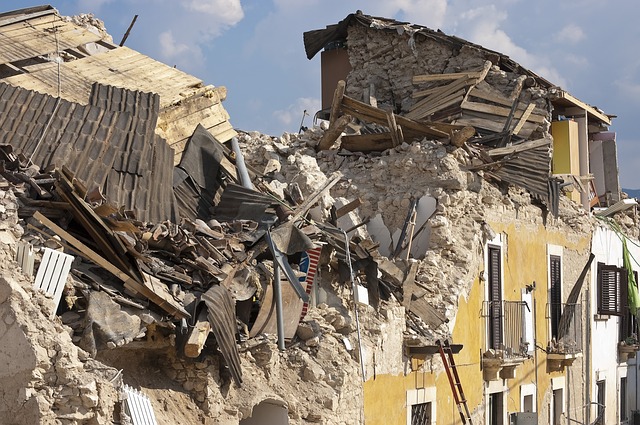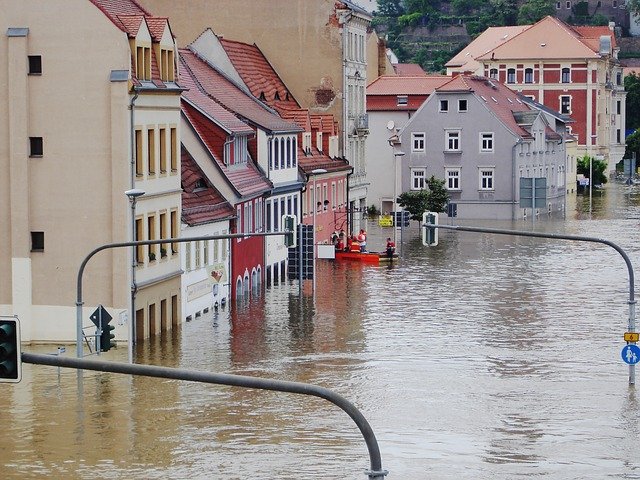نویسنده: AliBina
-

Core Words: How to Say “Lift Up,” “Squat,” and More!
Hi everybody, my name is Thomas. Welcome to the 2000 Core Dutch Words and Phrases video series! Each lesson will help you learn new words, practice, and review what you’ve learned. Ok! Let’s get started! First is… WORD 1 (NORMAL SPEED) wijnglas (NORMAL SPEED) “wine glass” (NORMAL SPEED) wijnglas (SLOW) wijnglas (NORMAL SPEED) “wine glass” (NORMAL SPEED) wijnglas vol wijn (NORMAL SPEED) “wine glass full of wine” (SLOW) wijnglas vol wijn WORD 2 (NORMAL SPEED) koffiepot (NORMAL SPEED) “coffee pot” (NORMAL SPEED) koffiepot (SLOW) koffiepot (NORMAL SPEED) “coffee pot” (NORMAL SPEED) De koffiepot zit vol koffie. (NORMAL SPEED) “The coffee pot is full of coffee.” (SLOW) De koffiepot zit vol koffie. WORD 3 (NORMAL SPEED) knolraap (NORMAL SPEED) “turnip” (NORMAL SPEED) knolraap (SLOW) knolraap (NORMAL SPEED) “turnip” (NORMAL SPEED) De kleinere blaadjes van de knolraap zijn het minst bitter. (NORMAL SPEED) “The smaller leaves of turnip greens are the least bitter.” (SLOW) De kleinere blaadjes van de knolraap zijn het minst bitter. WORD 4 (NORMAL SPEED) ruggengraat (NORMAL SPEED) “backbone” (NORMAL SPEED) ruggengraat (SLOW) ruggengraat (NORMAL SPEED) “backbone” (NORMAL SPEED) De ruggengraat is opgebouwd uit verschillende kleinere botten. (NORMAL SPEED) “The backbone is made up of several smaller bones.” (SLOW) De ruggengraat is opgebouwd uit verschillende kleinere botten. WORD 5 (NORMAL SPEED) trekken (NORMAL SPEED) “pull” (NORMAL SPEED) trekken (SLOW) trekken (NORMAL SPEED) “pull” (NORMAL SPEED) De jongen trekt aan een rode wagen met een pompoen erin. (NORMAL SPEED) “The boy is pulling a red wagon with a pumpkin inside.” (SLOW) De jongen trekt aan een rode wagen met een pompoen erin. WORD 6 (NORMAL SPEED) hurken (NORMAL SPEED) “squat” (NORMAL SPEED) hurken (SLOW) hurken (NORMAL SPEED) “squat” (NORMAL SPEED) neerhurken (NORMAL SPEED) “squat down” (SLOW) neerhurken WORD 7 (NORMAL SPEED) gebaren (NORMAL SPEED) “gesture” (NORMAL SPEED) gebaren (SLOW) gebaren (NORMAL SPEED) “gesture” (NORMAL SPEED) De mannen gebaren. (NORMAL SPEED) “The men are gesturing.” (SLOW) De mannen gebaren. WORD 8 (NORMAL SPEED) je hand opsteken (NORMAL SPEED) “raise one’s hand” (NORMAL SPEED) je hand opsteken (SLOW) je hand opsteken (NORMAL SPEED) “raise one’s hand” (NORMAL SPEED) je hand opsteken om een vraag te beantwoorden (NORMAL SPEED) “raise one’s hand to answer a question” (SLOW) je hand opsteken om een vraag te beantwoorden WORD 9 (NORMAL SPEED) optillen (NORMAL SPEED) “lift up” (NORMAL SPEED) optillen (SLOW) optillen (NORMAL SPEED) “lift up” (NORMAL SPEED) Gebruik je benen en niet je rug bij het optillen van zware dingen. (NORMAL SPEED) “Use your legs not your back to lift up heavy items.” (SLOW) Gebruik je benen en niet je rug bij het optillen van zware dingen. WORD 10 (NORMAL SPEED) hangen (NORMAL SPEED) “hang” (NORMAL SPEED) hangen (SLOW) hangen (NORMAL SPEED) “hang” (NORMAL SPEED) De vleermuis hangt aan de tak. (NORMAL SPEED) “The bat is hanging from the branch.” (SLOW) De vleermuis hangt aan de tak. PRACTICE/REVIEW Let’s review. Respond to the prompts by speaking aloud. First, you will hear a word or phrase in English. Respond in Dutch, then repeat after me, focusing on pronunciation. Ready? (Do you remember how to say “wine glass?” Review 1) (3) (2) (1) wijnglas (1) wijnglas (And how to say “coffee pot?” Review 2) (3) (2) (1) koffiepot (1) koffiepot (What about “turnip?” Review 3) (3) (2) (1) knolraap (1) knolraap (Do you remember how to say “backbone?” Review 4) (3) (2) (1) ruggengraat (1) ruggengraat (Let’s try “pull!” Review 5) (3) (2) (1) trekken (1) trekken (What about “squat?” Review 6) (3) (2) (1) hurken (1) hurken (Now, let’s see if you remember how to say “gesture!” Review 7) (3) (2) (1) gebaren (1) gebaren (Another one! What about “raise one’s hand?” Review 8) (3) (2) (1) je hand opsteken (1) je hand opsteken (Do you remember how to say “lift up?” Review 9) (3) (2) (1) optillen (1) optillen (And finally, do you remember how to say “hang?” Review 10) (3) (2) (1) hangen (1) hangen Well done! See you next time! Tot ziens. -

5 Ways to Learn Russian with the Visual flashcards
Here’s how you learn over 1,500 words, a printable resource that boosts your retention and makes learning fun, visual flashcards. But first, if you don’t yet have access to our language learning system, sign up for our free lifetime account right now. Just click the link in the description to get your free lifetime account. First, what are visual flashcards? In printable flashcards, there are printable flashcards that teach you 1,500 words across 60 topics. And if you’re a beginner, these are an easy way to learn the most common words and speak more of your target language for free. For every flashcard, you’ll get the word, the image, and the translation for easy retention. And your job is to go through and drill these flashcards and boost your vocabulary. But there are several ways you can learn with these that I’ll talk about a bit later. How to get started with the printable visual flashcards. To get these visual flashcards, just click the link and sign up for a free lifetime account to our learning program. And these are a free resource for our members. So once you’ve signed up, check your email to activate your account and download the visual flashcards. Then, print out PDF files and make sure to print in double-side format so you have the words on one side and the meanings on the other. And then, cut out the cards and you’re ready to go. How you’ll learn words and phrases even faster. Now, you might be wondering, why not just study with digital flashcards? And yes, you can also find spaced-repetition flashcards inside our program. However, there are benefits to learning with physical materials that’ll actually help you learn better. If you’re learning on your phone or your computer, you’ll have tons of notifications and distractions. And chances are, you’ll get sidetracked and end up on another website, YouTube video, or app. It’s almost impossible to focus and you won’t learn anything well if you can’t focus. Our visual flashcards are a physical resource, which means there are no distractions. Five minutes spent on physical flashcards will be much more effective than five minutes on your phone, where you have app companies constantly trying to get your attention. With the flashcards, you get one word per card, so you can easily focus on one word at a time and nothing else. Plus, physical flashcards are more easily accessible. If they’re sitting on your desk, you can quickly take a look. But an app that’s buried on the second or third page of your home screen will easily be overlooked and you won’t learn anything at all. And physically interacting with the words and the cards will help reinforce your memory. Now, let’s get into how to learn with these flashcards. Five ways to learn with the visual flashcards. Once you’ve downloaded and printed the flashcards, here’s what you can do. One, set aside five to 10 minutes and pick out 20 cards. Spend the first half reviewing the cards and the second half testing yourself on the meanings. Two, for the words that you struggle with, keep them in a separate pile. That way, you can focus on just the hard words and skip the ones you know. Three, since the words are separated across 60 topics, you can focus on one topic at a time and keep at it until you’re done with all 60 topics. Four, place the cards on the objects they represent around your home. Or five, turn it into a game with your friends. Have them quiz you on the words. So pick which way works best for you and learn with our visual flashcards. Okay, so if you want to boost your vocabulary and speak more of your target language, download our visual flashcards for free right now. Just click the link and sign up for a free lifetime account to our learning program. -

Le terribili preposizioni (Terrible prepositions) – Cyber Italian Blog

Le preposizioni sono uno degli aspetti più illogici della lingua italiana.
Perché diciamo “vado IN campagna”, ma diciamo “vado A casa”?
Perché diciamo “chiamo mia nonna” ma diciamo “telefono A mia nonna”?
Tu hai problemi con le preposizioni?Prepositions are one of the most illogical aspects of the Italian language.
Why do we say “vado IN campagna” (I go to the countryside), but we say “vado A casa” (I go home)?
Why do we say “chiamo mia nonna” (I call my grandmother) but we say “telefono A mia nonna” (I phone my grandmother)?
Do you have problems with prepositions?To practice Italian this week we invite you to read and test…
PRACTICE HERE: Italian/English Version
-

Natural disasters in Portuguese | Portuguese Language Blog
Fala, pessoal! What’s up, you guys? Como está o clima onde vocês estão? What’s the weather like where you are? Fevereiro (February) means freezing cold temperatures in the northern hemisphere, but scorching quente (hot) weather for those down south, like us Brazilians. At least it’s a break from the raging tempestades (storms) we saw in janeiro (January). And sadly, as far as extreme weather is concerned, the event that influenced me to write this text was an unfortunate one.
You might have heard about the tragic desabamento de rochas (rockfall) in the touristic city of Capitólio last month. The incident made the international headlines, featuring a striking video where you can see a large cliffside rock formation collapsing onto three barcos (boats). Ten people were mortas (killed) and 32 others left feridas (injured) as a result of the impact. Firefighters believe that the continuously heavy chuva (rain) affecting the area might be largely responsible. If you want to read more about it, find further information in Portuguese here or in English here.
Although recent climatic adversities have been linked to the effects aquecimento global (global warming), desastres naturais (natural disasters) have always been a part of history. Today’s post will expand on this one from 2012 with a few different phenomena and other examples. Vamos nessa!
drought – seca
- Israel has been suffering from its longest drought on record | Israel está passando pela sua seca mais longa já registrada.
hurricane – furacão
- Hurricane Katrina is said to be one of the worst catastrophes of the century | O furacão Katrina é considerado uma das piores catástrofes do século.
blizzard – nevasca
- Over 12 people were killed in the avalanche, caused by a blizzard | Mais de 12 pessoas morreram na avalanche, causada por uma nevasca.
heatwave – onda de calor
- The heatwave sweeping across Europe is predicted to reach France next week | A onda de calor passando pela Europa está prevista para chegar à França na próxima semana.
flood – enchente
- All meteorologists agree that heavy rain and floods can be expected this season | Todos meteorologistas concordam que chuvas fortes e enchentes podem ser esperadas nesta estação.
earthquake – terremoto
- The 2011 earthquake in Japan claimed tens of thousands of lives and over 300 billion in property damage | O terremoto de 2011 no Japão custou dezenas de milhares de vidas e mais de 300 bilhões em danos materiais.
landslide – deslizamento de terra
- The school’s roof caved in during the landslide | O telhado da escola desabou durante o deslizamento de terra.
volcanic eruption – erupção vulcânica
- A volcanic eruption warning has been issued in Iceland | Um alerta de erupção vulcânica foi emitido na Islândia.
wildfire – incêndio florestal, queimada
- A large portion of the area’s native greenery was destroyed in the wildfire | Uma grande parte da vegetação nativa da área foi destruída na queimada.
hailstorm – tempestade de granizo
- The southern provinces of Chine were hit by a severe hailstorm, which brought serious losses | As províncias do sul da China foram atingidas por uma forte tempestade de granizo, que trouxe sérias perdas.
Do you know how to falar sobre o tempo (talk about the weather) in Portuguese? Don’t miss out on these previous posts:
-

5 Ways to Learn Dutch with the Visual flashcards
Here’s how you learn over 1,500 words, a printable resource that boosts your retention and makes learning fun, visual flashcards. But first, if you don’t yet have access to our language learning system, sign up for our free lifetime account right now. Just click the link in the description to get your free lifetime account. First, what are visual flashcards? In printable flashcards, there are printable flashcards that teach you 1,500 words across 60 topics. And if you’re a beginner, these are an easy way to learn the most common words and speak more of your target language for free. For every flashcard, you’ll get the word, the image, and the translation for easy retention. And your job is to go through and drill these flashcards and boost your vocabulary. But there are several ways you can learn with these that I’ll talk about a bit later. How to get started with the printable visual flashcards. To get these visual flashcards, just click the link and sign up for a free lifetime account to our learning program. And these are a free resource for our members. So once you’ve signed up, check your email to activate your account and download the visual flashcards. Then, print out PDF files and make sure to print in double-side format so you have the words on one side and the meanings on the other. And then, cut out the cards and you’re ready to go. How you’ll learn words and phrases even faster. Now, you might be wondering, why not just study with digital flashcards? And yes, you can also find spaced-repetition flashcards inside our program. However, there are benefits to learning with physical materials that’ll actually help you learn better. If you’re learning on your phone or your computer, you’ll have tons of notifications and distractions. And chances are, you’ll get sidetracked and end up on another website, YouTube video, or app. It’s almost impossible to focus and you won’t learn anything well if you can’t focus. Our visual flashcards are a physical resource, which means there are no distractions. Five minutes spent on physical flashcards will be much more effective than five minutes on your phone, where you have app companies constantly trying to get your attention. With the flashcards, you get one word per card, so you can easily focus on one word at a time and nothing else. Plus, physical flashcards are more easily accessible. If they’re sitting on your desk, you can quickly take a look. But an app that’s buried on the second or third page of your home screen will easily be overlooked and you won’t learn anything at all. And physically interacting with the words and the cards will help reinforce your memory. Now, let’s get into how to learn with these flashcards. Five ways to learn with the visual flashcards. Once you’ve downloaded and printed the flashcards, here’s what you can do. One, set aside five to 10 minutes and pick out 20 cards. Spend the first half reviewing the cards and the second half testing yourself on the meanings. Two, for the words that you struggle with, keep them in a separate pile. That way, you can focus on just the hard words and skip the ones you know. Three, since the words are separated across 60 topics, you can focus on one topic at a time and keep at it until you’re done with all 60 topics. Four, place the cards on the objects they represent around your home. Or five, turn it into a game with your friends. Have them quiz you on the words. So pick which way works best for you and learn with our visual flashcards. Okay, so if you want to boost your vocabulary and speak more of your target language, download our visual flashcards for free right now. Just click the link and sign up for a free lifetime account to our learning program. -

5 Ways to Learn Turkish with the Visual flashcards
Here’s how you learn over 1,500 words, a printable resource that boosts your retention and makes learning fun, visual flashcards. But first, if you don’t yet have access to our language learning system, sign up for our free lifetime account right now. Just click the link in the description to get your free lifetime account. First, what are visual flashcards? In printable flashcards, there are printable flashcards that teach you 1,500 words across 60 topics. And if you’re a beginner, these are an easy way to learn the most common words and speak more of your target language for free. For every flashcard, you’ll get the word, the image, and the translation for easy retention. And your job is to go through and drill these flashcards and boost your vocabulary. But there are several ways you can learn with these that I’ll talk about a bit later. How to get started with the printable visual flashcards. To get these visual flashcards, just click the link and sign up for a free lifetime account to our learning program. And these are a free resource for our members. So once you’ve signed up, check your email to activate your account and download the visual flashcards. Then, print out PDF files and make sure to print in double-side format so you have the words on one side and the meanings on the other. And then, cut out the cards and you’re ready to go. How you’ll learn words and phrases even faster. Now, you might be wondering, why not just study with digital flashcards? And yes, you can also find spaced-repetition flashcards inside our program. However, there are benefits to learning with physical materials that’ll actually help you learn better. If you’re learning on your phone or your computer, you’ll have tons of notifications and distractions. And chances are, you’ll get sidetracked and end up on another website, YouTube video, or app. It’s almost impossible to focus and you won’t learn anything well if you can’t focus. Our visual flashcards are a physical resource, which means there are no distractions. Five minutes spent on physical flashcards will be much more effective than five minutes on your phone, where you have app companies constantly trying to get your attention. With the flashcards, you get one word per card, so you can easily focus on one word at a time and nothing else. Plus, physical flashcards are more easily accessible. If they’re sitting on your desk, you can quickly take a look. But an app that’s buried on the second or third page of your home screen will easily be overlooked and you won’t learn anything at all. And physically interacting with the words and the cards will help reinforce your memory. Now, let’s get into how to learn with these flashcards. Five ways to learn with the visual flashcards. Once you’ve downloaded and printed the flashcards, here’s what you can do. One, set aside five to 10 minutes and pick out 20 cards. Spend the first half reviewing the cards and the second half testing yourself on the meanings. Two, for the words that you struggle with, keep them in a separate pile. That way, you can focus on just the hard words and skip the ones you know. Three, since the words are separated across 60 topics, you can focus on one topic at a time and keep at it until you’re done with all 60 topics. Four, place the cards on the objects they represent around your home. Or five, turn it into a game with your friends. Have them quiz you on the words. So pick which way works best for you and learn with our visual flashcards. Okay, so if you want to boost your vocabulary and speak more of your target language, download our visual flashcards for free right now. Just click the link and sign up for a free lifetime account to our learning program. -

How to Ask About Well-Being – Examples and Variations
Let’s look at some examples. Listen and repeat or speak along with the native speakers. Как дела? (Kak dela?) Хорошо. (Khorosho.) Как дела? (Kak dela?) Хорошо. (Khorosho.) Как дела? (Kak dela?) Неплохо. (Neplokho.) Как дела? (Kak dela?) Неплохо. (Neplokho.) Как поживаете? (Kak pozhivayete?) Прекрасно. (Prekrasno) Как поживаете? (Kak pozhivayete?) Прекрасно. (Prekrasno.) Как дела? (Kak dela?) Отлично. (Otlichno.) Как дела? (Kak dela?) Отлично. (Otlichno.) Как дела? (Kak dela?) Хорошо. А у тебя? (Khorosho. A u tebya?) Как дела? (Kak dela?) Хорошо. А у тебя? (Khorosho. A u tebya?) Did you notice how I added the phrase “А у тебя?” (A u tebya?)? Хорошо. А у тебя? (Khorosho. A u tebya?) “(I’m) well, and you?” First is хорошо (khorosho), “well.” Хорошо. Next is “А у тебя?” (A u tebya?) “And you?” А у тебя? First is А. (A), “And.” А. А. Next is у тебя, “with you.” у тебя. у тебя. Together, it’s А у тебя? (A u tebya?) literally something like “And about you,” but translates as “And you?” А у тебя? You can use this phrase to reciprocate the question when someone asks you about your well being. For example, if someone says, Как дела? (Kak dela?) You can respond with, Хорошо. А у тебя? (Khorosho. A u tebya?) “I’m well. And you?” First, respond to the question. Then inquire about the other person’s well being with А у тебя? (A u tebya?) “And you?” Note, as тебя (tebya), “you,” is informal, this expression is appropriate for informal situations. Remember this pattern, Хорошо. А у тебя? (Khorosho. A u tebya?) you’ll see it again later. For formal situations you can use А у вас? (A u vas?). As a rule of thumb remember, when you’re asked Как дела? (Kak dela?) reply with your well being and А у тебя? (A u tebya?). When you’re asked Как поживаете? (Kak pozhivayete?) respond with your well-being and “А вы?” (A vy?) For example, Хорошо. А вы? “I’m fine. And you?” -

Happy Easter!) – Cyber Italian Blog

La Pasqua in Italia è sempre un rituale. Un momento speciale, con processioni religiose, dolci tradizionali e momenti di incontro con la famiglia e gli amici.
Tu celebri la Pasqua? In ogni caso ti auguriamo Buona Pasqua!Easter in Italy is always a ritual. A special moment, with religious processions, traditional cakes and meetings with family and friends.
Do you celebrate Easter? In any case, we wish you a Happy Easter!To practice Italian this week we invite you to play…
PRACTICE HERE: Italian/English VersionImage source 123rf.com
-

Modern Art Week special: Manuel Bandeira
Fala, galera! If you look back a hundred years, do you know what was going on in your country back then? Well, cem anos atrás (a hundred years ago), the Semana de Arte Moderna (Modern Art Week) was held in São Paulo, a milestone in arts and culture in Brazil. The event featured exposições de arte (art exhibitions), palestras (lectures), book and poetry readings, concerts and dance performances. Many notorious artists, pintores (painters) and escritores (writers) like Di Cavalcanti, Anita Malfatti, Mário de Andrade, Oswald de Andrade and Heitor Villa-Lobos had the unique opportunity to present their work to Brazilian society. But enough about that por enquanto (for the time being). You can find out more about Semana de Arte Moderna in future posts.
Let’s now shift our attention to Manuel Bandeira, whose poetry was received with both enthusiasm and rage by the clapping and booing público (audience) during a reading of “Os Sapos” in Semana de Arte Moderna. The modernist author had a funny, provocative and iconoclastic style, which we will get to know today with his best-known poem, Vou-me embora pra Pasárgada. Below you can find the original stanzas in Portuguese, followed by minha tradução (my translation) in italics.
But first, how about brushing up on your listening skills? Ouça (listen to) the poem here, narrated by the author himself!
https://www.youtube.com/watch?v=LyD0raEt_y0
Vou-me embora pra Pasárgada
Lá sou amigo do rei
Lá tenho a mulher que eu quero
Na cama que escolhereiI’m leaving for Pasargada
There, I am a friends witi the king
There, I have the woman I want
In the bed that I chooseVou-me embora pra Pasárgada
Aqui eu não sou feliz
Lá a existência é uma aventura
De tal modo inconsequente
Que Joana a Louca de Espanha
Rainha e falsa demente
Vem a ser contraparente
Da nora que nunca tiveI’m leaving for Pasargada
Here, I am not happy
There, existence is an adventure
in such an inconsequential way
May Joana the Madwoman of Spain
Queen and falsely demented
Come to be a distant relative
From the daughter-in-law I never hadE como farei ginástica
Andarei de bicicleta
Montarei em burro brabo
Subirei no pau-de-sebo
Tomarei banhos de mar!
E quando estiver cansado
Deito na beira do rio
Mando chamar a mãe-d’água
Pra me contar as histórias
Que no tempo de eu menino
Rosa vinha me contar
Vou-me embora pra PasárgadaAnd how I will exercise
I will ride a bike
I will ride a wild donkey
I will climb the greasy pole
I will bathe in the sea!
And when I am tired
I will lie down by the river
I send for the mother of the waters
To tell me the stories
That when I was a child
Rosa would tell me
I’m leaving for PasargadaEm Pasárgada tem tudo
É outra civilização
Tem um processo seguro
De impedir a concepção
Tem telefone automático
Tem alcaloide à vontade
Tem prostitutas bonitas
Para a gente namorarIn Pasargada there is everything
It’s another civilization
It has a safe process
to prevent conception
It has automatic telephones
It has alkaloids at will
It has beautiful prostitutes
for us to dateE quando eu estiver mais triste
Mas triste de não ter jeito
Quando de noite me der
Vontade de me matar
— Lá sou amigo do rei —
Terei a mulher que eu quero
Na cama que escolherei
Vou-me embora pra Pasárgada.And when I’m at my saddest
Saddest beyond reason
When at night I feel
like killing myself
— There I am friends with the king —
I will have the woman I want
In the bed that I choose
I’m leaving for Pasargada. (1930)Feeling inspired? We have more poems for you! Check them out here:
Poetry in Portuguese | “Círculo Vicioso” by Machado de Assis
-

Free Dutch Gifts of the Month – April 2025
Access your free language gifts right now before they expire. First, 30 plus words and phrases for April Fool’s Day. This PDF will teach you how to say, that’s not funny, I don’t get it, and much more just in time for April Fool’s Day. Second, being funny, PDF conversation cheat sheet. This next PDF teaches you a quick conversation about telling jokes in your target language. Third, talking about months. If you can’t say the months, this one minute lesson will teach you how to say them all in your target language. Fourth, 15 flattering lines to impress native speakers. If you want to speak with natives, you’ll want to know these phrases. And fifth, want an app that gets you speaking from day one? The Innovative Language Learning app gives you bite-sized conversation lessons, where you listen to conversations between real native speakers and then get everything explained so you can speak and understand fast. Download it for free on Android, iPhone, and iPad. To get your free gifts of the month, click the link in the description below and download them now before they expire.




